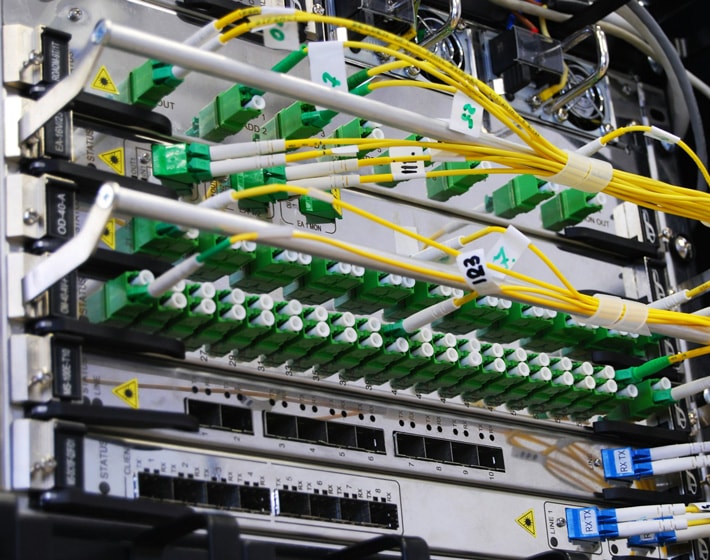Optical Fiber Solutions
Fast, Reliable Fiber Connectivity — From Planning to Performance

Network Design :
Designing fiber optic networks to meet specific bandwidth and coverage requirements.
Planning the route and topology of the fiber optic cables for optimal performance.
Site Surveys :
Conducting site surveys to assess the feasibility of fiber optic cable installation. Identifying potential obstacles and challenges in the deployment path.
Fiber Optic Cable Installation :
Laying and installing fiber optic cables along designated routes. Using various installation methods, including trenching, directional boring, and aerial installations.
Splicing and Termination :
Splicing fiber optic cables to connect individual segments. Terminating fiber optic cables with connectors to interface with networking equipment.
Testing and Certification :
Conducting testing and certification of installed fiber optic cables to ensure proper signal transmission. Using tools such as optical time-domain reflectometers (OTDRs) for fault detection.
Fiber Optic Equipment Installation:
Installing and configuring fiber optic networking equipment, including transceivers, switches, and routers. Connecting fiber optic cables to networking devices.
Fiber to the Home (FTTH) Deployment :
Implementing fiber optic networks directly to residential and business premises. Extending fiber connectivity to support broadband services.
Maintenance and Repairs :
Performing routine maintenance of fiber optic networks to identify and address issues proactively. Conducting repairs and splicing to restore connectivity in case of cable damage.
Network Upgrades :
Upgrading existing fiber optic networks to accommodate higher bandwidth requirements. Replacing older or obsolete fiber optic cables and equipment.
Dark Fiber Leasing :
Offering dark fiber (unused fiber optic infrastructure) for lease to other telecommunications providers or businesses. Managing agreements and service level agreements (SLAs) for dark fiber services.
Fiber Optic Network Management :
Implementing network management systems to monitor and control fiber optic networks. Remote monitoring of network performance, troubleshooting, and configuration management.
